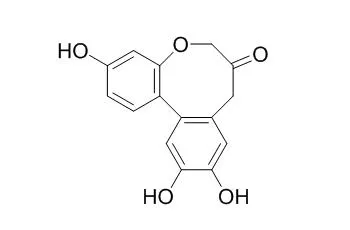Protosappanin A as one major and effective ingredient from Caesalpinia sappan L. exhibited antirejection activity obviously in heart-transplanted rat.
METHODS AND RESULTS:
The present study was designed to screen out the potential target genes of Protosappanin A with microarray technology and reveal some molecular mechanism of immunosuppressive effect. Rats performed with ectopic peritoneal heart transplantation were randomized into three groups receiving different treatments for 7 days: Protosappanin A group (25 mg kg(-1)), cyclosporine A group (10 mg kg(-1)), and control group. The differentially expressed genes responding to Protosappanin A were analyzed with microarrays. Among common differentially expressed genes, the ones of interest were selected for further evaluation by real-time quantitative reverse transcriptase polymerase chain reaction (qRT-PCR), Western blot, immunochemistry, immunofluorescence, and ELISA. Among the 146 common differentially expressed genes, NF-kappaB and related genes like IkappaBa, IFN-r, and IP10 were selected for verification. The results of qRT-PCR, Western blot, immunochemistry, and ELISA showed that Protosappanin A significantly reduced the expression of NF-kappaB, IFN-r, and IP10 (p < 0.05) and increased IkappaBa expression (p < 0.05) in graft. Moreover, the immunochemistry staining of NF-kappaB and IkappaBa was mainly observed in infiltrating mononuclear cells. Strikingly, immunofluorescent staining localized NF-kappaB to the TCR-positive T cells in graft. Furthermore, Protosappanin A exhibited inhibitory effect on T cell proliferation in recipients after 7-day treatment. In conclusion, Protosappanin A might act on T cells through inhibiting NF-kappaB activation and downstream gene expressions of IFN-r and IP10, meanwhile reducing T cell proliferation responding to alloantigen, so as to induce immunosuppressive effect.
CONCLUSIONS:
The results encourage a potential therapeutic evaluation of Protosappanin A for clinical organ transplantation or other T cell-mediated immune disorders. Additionally, our study also verified the feasibility of microarray utilization in Chinese herb research to explore molecular mechanism and promote development of scientific theories. |






 Cell. 2018 Jan 11;172(1-2):249-261.e12. doi: 10.1016/j.cell.2017.12.019.IF=36.216(2019)
Cell. 2018 Jan 11;172(1-2):249-261.e12. doi: 10.1016/j.cell.2017.12.019.IF=36.216(2019) Cell Metab. 2020 Mar 3;31(3):534-548.e5. doi: 10.1016/j.cmet.2020.01.002.IF=22.415(2019)
Cell Metab. 2020 Mar 3;31(3):534-548.e5. doi: 10.1016/j.cmet.2020.01.002.IF=22.415(2019) Mol Cell. 2017 Nov 16;68(4):673-685.e6. doi: 10.1016/j.molcel.2017.10.022.IF=14.548(2019)
Mol Cell. 2017 Nov 16;68(4):673-685.e6. doi: 10.1016/j.molcel.2017.10.022.IF=14.548(2019)